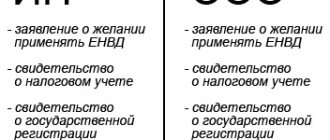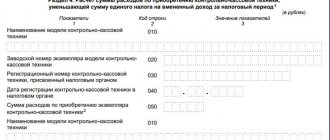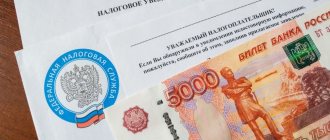UTII, USN, OSNO, PSN, Unified Agricultural Tax: for some this is a meaningless set of letters, but for an entrepreneur it is a direct indication of what his tax burden will be. To learn how you can compare taxation systems in order to legally reduce payments to the budget when doing business, read the article “Taxation systems: how to make the right choice?”
And for those who still have questions or those who want to get advice from a professional, we can offer a free consultation on taxation from 1C:
Free tax consultation
Note! tax regime has been abolished since 2021 . Payers of UTII need to choose another taxation option.
To switch from UTII to a simplified taxation system, it was necessary to submit an application to switch to the simplified tax system before the end of 2020.
Create an application for the simplified tax system for free
Features of UTII
Documentation
Application for UTII (LLC)
Application for UTII (IP)
Deregistration under UTII (LLC)
Deregistration according to UTII (IP)
Declaration on UTII
LLC taxes The imputed tax replaces the payment of:
- income tax;
- VAT, in addition to what is paid when importing into the territory of the Russian Federation;
- property tax, with some exceptions.
Prepare a UTII declaration for only 149 rubles
We draw the attention of all LLCs to UTII - organizations can pay taxes only by non-cash transfer. This is a requirement of Art. 45 of the Tax Code of the Russian Federation, according to which the organization’s obligation to pay tax is considered fulfilled only after presentation of a payment order to the bank. The Ministry of Finance prohibits paying LLC taxes in cash.
Individual entrepreneur taxes For individual entrepreneurs, the imputed tax replaces the payment of:
- personal income tax;
- VAT, in addition to what is paid when importing into the territory of the Russian Federation;
- tax on property used in business activities, for which you need to apply for an exemption from payment to the tax office at the location of such real estate.
The essence of the single tax on imputed income is clear from its name. The word “imputed” is used quite rarely in colloquial language, unless you remember such clericalisms as “impute guilt” or “impute duty.” The meaning of the word “impute” is to count or estimate as something. In this case, the state believes that the UTII payer, engaged in the type of activity permitted for this regime, must receive a certain income from it. In this case, income is assessed not in monetary terms, but in physical indicators.
For example, three workers in the service sector will bring more income than one, and a store with an area of 30 square meters. m should be more profitable than an area of 20 square meters. m. In st. 346.27 of the Tax Code of the Russian Federation provides a more understandable interpretation of imputed income as potentially possible, taking into account the conditions affecting the receipt of this income.
What conditions are meant? First of all, this is a physical indicator to which the basic profitability is tied. A physical indicator can be the number of employees, units of transport, or the area of the sales floor. Basic profitability is a conditional monthly profitability per unit of physical indicator, calculated in rubles.
Here are simple examples of calculating the tax base for an imputed tax (we take the data from the table in Article 346.29 of the Tax Code of the Russian Federation):
- The basic monthly income for the provision of household services per employee (including the individual entrepreneur himself) is 7,500 rubles. If there are three employees, then the basic profitability will be 7500*3 = 22500 rubles.
- The basic income per month for catering services, if there is a service hall, is 1000 rubles. The physical indicator here is a square meter. Basic profitability of an object with an area of 20 sq. m will be 20,000 rubles, and on an area of 30 sq. m, respectively - 30,000 rubles.
- The basic profitability for motor transport services for the transportation of goods will be 6,000 rubles per vehicle. We calculate: three cars should give an income of 6,000 * 3 = 18,000 rubles, and five cars - 30,000 rubles.
Is this approach objective for calculating real income? No. If you want objectivity, then choose the simplified taxation system or the general taxation system. In this case, we are interested in the profitability of the imputed tax, i.e. reduction of tax burden.
Please note that the basic yield is the tax base for calculating the imputed tax, but it still needs to be adjusted by two special coefficients.
What is the UTII tax rate: general provisions
The taxation system based on such a criterion as imputed income is regulated by Chapter.
26.3 of the Tax Code of the Russian Federation (hereinafter referred to as the Tax Code of the Russian Federation) and is a special tax regime for certain types of activities, in which the tax is fixed and does not depend on changes in the profitability of the business. The deadlines for submitting a declaration and paying taxes under the single tax on imputed income (hereinafter referred to as UTII) are described in our article at the link: What is the deadline for submitting a declaration and paying taxes under UTII? Other features of the regime, in particular regarding who can apply it, are highlighted in the article at the link: Who can apply and pay UTII - conditions and restrictions.
For any tax regime, including UTII, such concepts as the tax base and tax rate are fundamental. According to paragraph 1 of Art. 53 Tax Code of the Russian Federation:
- tax base - characteristics of the object on which the tax is charged (cost or other);
- tax rate - the amount of charges per unit of an object that is the tax base.
Note! According to paragraph 2 of Art. 346.29 of the Tax Code of the Russian Federation, the tax base for UTII is imputed income. The single tax rate on imputed income is 15% of the specified income, which is stated in paragraph 1 of Art. 346.31 Tax Code of the Russian Federation. In this case, the UTII rate may be set in a different amount in accordance with clause 2 of this article.
The UTII tax rate is set at 7.5–15% in accordance with regional legislation. The UTII rate depends on:
- who is the tax payer;
- what activities are subject to taxation.
Calculation of the amount of tax on UTII in 2021
Tax calculation in this mode is carried out according to the algorithm given in Art. 346.29 of the Tax Code of the Russian Federation, which can be expressed as a formula:
DB * FP * K1 * K2 * 15% = amount of imputed tax per month
For this regime, it is not the income received that is taken into account, but special indicators:
- FP is a physical indicator, which can be the number of employees, vending machines, seats in transport, the area of the sales floor in square meters. m and others;
- BD – basic profitability per month per unit of physical indicator in rubles;
- K1 is a deflator coefficient, set every year by order of the Ministry of Economic Development of the Russian Federation.
- K2 is a correction reduction factor that is adopted annually by local authorities and varies from 0.005 to 1.
The K1 coefficient for 2021 was established by order of the Ministry of Economic Development dated October 21, 2019 No. 739 and is 2.005.
The first three components of the formula (BD, FP and K1) do not have regional characteristics, and the K2 coefficient can greatly change, or rather, reduce the amount of imputed tax payable. In addition to the fact that K2 will differ by region, within the framework of the municipal regulatory act it will also differ by type of activity.
Calculate UTII for free
Please note that by region for imputed tax we do not mean a region or region, as for the simplified tax system Income minus expenses, but a municipality. For example, within one region, such legal acts may be adopted in different municipal districts, so the types of activities and the K2 coefficient will be different for them. Some representative bodies indicate different K2 coefficients even for different streets of the same municipality.
Additionally, K2 may differ in the type of goods sold for retail trade and, finally, in the type of object of trade or provision of services. For example, K2 in the same municipality for a restaurant or bar can be 1.0, for a cafe – 0.8, and for canteens – 0.4.
Where can I find the K2 coefficient? You can contact the tax office at the place of business (since UTII payers are registered at the place of business) or the economic department of the local administration.
You can find such information yourself on the official website of the Federal Tax Service https://www.nalog.ru. Select the region you are interested in, enter “UTII” in the search and find “Features of regional legislation.” Regional regulations indicate the types of activities permitted for this regime in this region, and the K2 coefficient for each type.
✐Example ▼
Let's calculate how much imputed tax an individual entrepreneur who has two employees and has chosen UTII to provide furniture repair services in Tula must pay in 2020. The basic monthly income for household services is 7,500 rubles per employee, taking into account the individual entrepreneur himself. The regional K2 coefficient for furniture repair is set at 0.56.
Let's substitute the values into the formula DB * FP * K1 * K2 * 15% = 7,500 * 3 * 2.005 * 0.56 * 15% = 3,789.45 rubles. The amount of UTII for the quarter will be only 11,368 rubles.
UTII: how an individual entrepreneur can become a tax payer
Here, in 2021, there were also no significant changes. To officially become an imputation payer, an individual entrepreneur needs to submit his application to the tax office. It is drawn up according to a special approved form No. UTII-2 (for LLCs - No. UTII-1). This must be done within five days from the start date of the activity that gives the right to use this special regime.
There is usually no need to provide additional documents. The tax office may ask the individual entrepreneur to provide copies of certificates of registration and registration as an individual entrepreneur (certified), as well as a passport.
If you are just opening an individual entrepreneur, then an application for the use of UTII is submitted along with a set of documents when registering you as an individual entrepreneur.
The inspection must issue you a corresponding notification within up to five days. The date of registration corresponds to the start date of activity, possible in accordance with the requirements of UTII (it must be indicated when filling out the application).
An individual entrepreneur must register under UTII, even if he is already registered with the same tax office, but for other reasons. The application is submitted at the place where the business is actually carried out. The exceptions include: distribution trade, advertising on vehicles, passenger and cargo transportation. It is important to remember that if the activities of an individual entrepreneur extend to several municipalities, then you must register in each of them.
What are the consequences of failure to comply with this clause? If an individual entrepreneur does not submit an application for the application of UTII within the required period, then the tax authorities have the right to hold him accountable and collect a fine of 10% of income for this period (but not less than 40 thousand rubles).
Since the UTII regime is voluntary, you can refuse it. For this purpose, the individual entrepreneur is also required to submit an application drawn up in form No. UTII-4 (for LLCs - No. UTII-3) within five working days from the date of termination of the activity giving the right to use UTII, or transition to another taxation scheme.
Is it possible to reduce the tax on UTII?
You cannot change DB and K1 in the imputation tax calculation formula, but you can:
1. Select for activity the region in which the K2 coefficient will be the smallest, provided that the type of activity you want in this region can work on UTII (taking into account that local authorities have the right to reduce the list of types of activities specified in Article 346.26 of the Tax Code RF).
2.Reduce the physical indicator if this does not negatively affect the business, your employees or clients. For example, by using more ergonomic placement of display cases or retail furniture, you can reduce the area of the sales floor.
Do not forget also that the physical indicator for retail and catering facilities is not their entire area, but only the area of the sales floor or service area. If you rent a property for retail or catering, be sure to indicate such area separately in the contract so as not to pay tax on ancillary premises. When checking, tax officials can measure the area actually used for trade or services, and if it is underestimated, the tax on the quarterly declaration will be recalculated, and a fine of 20% will be levied on the amount of underpaid tax.
3. Use a vehicle to work in two shifts or an object of trade (providing services) around the clock. This will not change the amount of tax, but will allow you to receive more income, i.e. as a percentage, the tax burden on UTII will be less.
4. On UTII, as well as on the simplified version, insurance premiums can be taken into account when calculating the imputed tax if they were paid in the same quarter for which the tax is calculated.
The role of the bet
The tax rate for taxation of UTII activities plays a fiscal role. That is, it ensures a stable and constant replenishment of our country’s budget by ensuring the withdrawal of part of the income from the entrepreneur.
Local municipal bodies have the right not only to regulate the areas of activity that are subject to UTII taxation, by limiting them or making their own adjustments. They also have the right at the local level to reduce the rate itself, but not below the level of 7.5%.
It is in changing the size of the bet that its regulatory function is manifested. So, for example, for some types of activities that are not widespread enough in the local market, UTII can be established. This taxation system in itself is attractive for small businesses, as it expands its capabilities.
If this does not have the desired effect and the amount of supply for the consumer has not increased, then local authorities should reduce the UTII rate. For example, up to 10%. This is how entrepreneurs appear who occupy this market niche.
If this event does not happen, then local authorities have the right to impose a minimum UTII rate of 7.5% on the activity. Moreover, local authorities may next year, when this area becomes more settled and the number of proposals for it increases, raise this rate back, thereby increasing the amounts that will be transferred to the treasury.
How to reduce the amount of UTII tax due to paid insurance premiums
Individual entrepreneurs who do not have employees can reduce the calculated tax by the entire amount of individual entrepreneurs’ 2020 insurance premiums paid for themselves.
✐Example ▼
An individual entrepreneur without employees provides motor transport services for transporting passengers on a minibus that he owns, which has 20 seats. The amount of insurance premiums paid for yourself in the first quarter of 2021 is 10,000 rubles. The data for calculating the imputed tax is as follows:
- Basic profitability is 1,500 rubles per unit of physical indicator, i.e. one seat;
- Physical indicator – 20;
- K1 in 2021 - 2.005;
- Regional coefficient K2 – 0.8.
We calculate the tax amount for the month using the formula discussed above:
DB * FP * K1 * K2 * 15% = 1500 * 20 * 2.005 * 0.8 * 15% = 7,218 rubles
The amount of imputed tax for the quarter will be 7,218 * 3 months = 21,654 rubles. The tax can be reduced by the entire amount of insurance premiums paid by the entrepreneur for himself, i.e. for 10,000 rubles. Total, UTII payable is equal to 21,654 – 10,000 = 11,654 rubles.
If an individual entrepreneur has at least one employee, then the tax on the amount of contributions for himself and for employees can be reduced by no more than 50%. The same rule applies for LLCs - by paying insurance premiums for employees, the calculated imputed tax can be reduced by no more than half.
✐Example ▼
The organization is engaged in the retail trade of food products in a store with a sales area of 30 sq. m. in Omsk. m. The amount of insurance premiums for employees paid in the first quarter of 2020 is 36,400 rubles. The data for calculating the imputed tax is as follows:
- Basic profitability – 1800 rubles per unit of physical indicator, i.e. sq. m;
- Physical indicator – 30;
- K1 in 2021 - 2.005;
- Regional coefficient K2 – 0.7.
We calculate the tax for the month using the formula:
DB * FP * K1 * K2 * 15% = 1800 * 30 * 2.005 * 0.7 * 15% = 11,368.35 rubles
The amount of imputed tax for the quarter will be 11,368.35 * 3 months = 34,105 rubles. Although contributions for employees amounted to 36,400 rubles, the calculated tax can be reduced by no more than 50%. Total, UTII payable is 34,105/2 = 17,053 rubles.
Prepare a UTII declaration for only 149 rubles
When UTII becomes a more profitable regime than simplified tax system or OSN
The imputed tax, calculated according to the above formula, will have to be paid, regardless of whether you receive real income from your activity and what its size is. If you provide road transport services for the transportation of goods, but you have few orders, then UTII may be unprofitable, as well as if trade in your store cannot be called brisk. But from a certain point, when your real income grows and the calculated tax remains the same, the tax burden under this regime becomes less burdensome than under the simplified system.
To understand whether UTII will be beneficial in your case, you must first calculate the amount of imputed tax and compare it with the one you will pay under the simplified tax system. Of course, when starting a business, you can only guess what your income will be, so when registering an individual entrepreneur or LLC, you can first switch to the simplified tax system, and then, when you have specific numbers at your disposal, calculate whether it will be more profitable for you to pay UTII.
Activities on UTII are regulated by Chapter 26.3 of the Tax Code of the Russian Federation, therefore, to clarify specific issues, we will turn to it.
UTII size: what the law says
Chapter 26.3 of the Tax Code of the Russian Federation regulates the use of the UTII system. According to Art. 346.26 of the Tax Code of the Russian Federation, a single tax can be established for the following types of activities:
- retail;
- consumer services;
- veterinary services;
- vehicle maintenance services;
- transportation of passengers;
- parking services;
- advertising placement.
In these categories of activity, individual entrepreneurs and organizations have the opportunity to switch to a single tax. UTII replaces a number of taxes:
- for added value;
- at a profit;
- on the income of individuals;
- on the property of individuals;
- on the property of organizations.
As a general rule, the payer should be guided by the formula “how many taxes - so many reports.” Instead of filling out a whole package of documents for each individual tax, an entrepreneur or organization can draw up documentation for one UTII, which significantly saves time and money. The single tax is suitable for small businesses with less than one hundred employees.
To determine the percentage of the single tax on UTII, you must refer to Art. 346.31 of the Tax Code of the Russian Federation, which sets the rate. According to paragraph 1 of this article, the single tax is set at 15% of imputed income. This is a general rule to which there are exceptions.
Clause 2 of Art. 346.31 of the Tax Code of the Russian Federation indicates that acts of local government bodies may establish a tax rate that differs from the base one. Limits - from 7.5% to 15%. In other words, municipalities have the opportunity to reduce the UTII tax rate by half.
UTII rates by region
Since local governments can independently set the single tax rate for UTII, percentages in one region may differ from those in another territory. Let's give a few examples of how much interest on UTII tax is established by region.
| City | UTII tax rate |
| Moscow | There is no single tax |
| Kaluga region | 15%. The rate is 7.5% if the individual entrepreneur is disabled |
| Yaroslavl region | 15%. The rate is 7.5% if the individual entrepreneur is registered for the first time |
| Krasnodar region | 15%. The rate is 7.5% in settlements with a population of less than 30,000 people |
| Nizhny Novgorod Region | 15%. There is a 7.5% rate for first-time registered persons |
As can be seen from the table data, in the regions there is a tendency to fix the maximum tax percentage. As an exception, there are preferential conditions for certain categories of persons.
In calculating the UTII tax, adjustment coefficients are also used, which are established by the regions. To correctly calculate how much single tax should be paid on UTII, it is better to contact a professional lawyer.
Sources:
Chapter 26.3 of the Tax Code of the Russian Federation. UTII system for certain types of activities.
Federal Tax Service about UTII
Who can be a UTII payer in 2021
Organizations and individual entrepreneurs that intend to conduct one of the types of activities permitted for this regime have the right to imputation. Just as for the simplified system, the ability to work on imputation is limited by a number of conditions:
- the average number of employees of the taxpayer should not exceed 100 people;
- the share of participation in the organization of other organizations should be no more than 25%, except for consumer cooperation organizations and those in which more than half of the employees are disabled;
- organizations and individual entrepreneurs should not be payers of the single agricultural tax;
- the taxpayer should not be classified as the largest;
- the activity should not be carried out within the framework of a simple partnership agreement, joint venture or trust management;
- The area of the sales area or customer service area (catering) should not exceed 150 sq. m.
In addition, UTII is not used when leasing gas and gas filling stations and when providing catering services by educational, health and social security institutions.
As for restrictions on the amount of income received, there are none for UTII, which is natural, because Income records for this regime are not kept; the tax base is calculated using the formula already discussed above.
Who can work for UTII
To switch to UTII, there are two conditions: work in certain areas of activity and meet the requirements. The general requirements for individual entrepreneurs and LLCs are:
- The average number of employees for the previous year was less than 100 people.
- The activity is not related to a simple partnership or trust agreement.
- They do not provide leasing services for gas and gas filling stations.
There are two additional conditions for an LLC:
- The share of participation of other legal entities is less than 25%. If other companies have invested in the authorized capital of the LLC, their share should be less than 25%.
- Do not be a government agency that works in the catering industry. Simply put, a school or hospital with its own canteen cannot switch to UTII.
There are nuances with catering in government institutions. If a school or hospital rents out the entire canteen, along with the hall, the company or individual entrepreneur renting it can work on UTII. But if you rent a room without a hall, then no.
What activities can you do on UTII?
A complete list of activities on UTII is given in clause 2 346.26 of the Tax Code of the Russian Federation. It includes types of services: household, veterinary, catering, parking lots, trucking, service stations, rental of retail spaces and land plots for them, some types of advertising services and retail trade (from 2021, the sale of medicines, shoes, fur products is prohibited ).
The types of activities for UTII in a specific municipality, within the specified list, are established by the representative bodies of municipal districts, city districts and cities of federal significance. They are indicated in the same legal acts that establish the K2 coefficient.
Many disputes between taxpayers and regulatory authorities arise due to the recognition of a specific business as falling under UTII. Here are some of the controversial situations:
- Computer repair services, as a type of household services, are allowed on UTII, but installation of computer systems and programs, their configuration and maintenance are not. The Ministry of Finance came to this conclusion.
- Services for installing plastic windows are permitted if finished products are installed. If customers place orders based on samples produced by contractors, tax authorities consider this to be trade outside the stationary network, which is not subject to UTII.
- Catering services through facilities that do not have a service hall are allowed, and the production of culinary dishes based on pre-orders accepted remotely, according to the Ministry of Finance, cannot take place within the framework of imputation.
- Leasing retail space on UTII is possible, but you cannot lease out part of the trading floor to accommodate a vending machine.
Controversial situations on UTII must be considered taking into account the judicial arbitration practice in the district and the attitude of the territorial tax inspectorate to the clarifications of the Ministry of Finance. If you have any doubts about whether you can switch to this regime in your case, you should contact the tax office at your place of business with a written request describing your situation.
How much is the UTII tax rate?
Important! Art. 346.31 of the Tax Code of the Russian Federation did not change in 2021, and therefore the previously established rate limits with a minimum threshold of 7.5% and a maximum of 15% remained the same.
You can find more complete information on the topic in ConsultantPlus. Free trial access to the system for 2 days.
At the same time, the specific interest rate is less than 15%, in accordance with clause 2 of Art. 346.31 of the Tax Code of the Russian Federation can be set at the level:
- municipal district;
- urban district;
- federal cities of Moscow, St. Petersburg and Sevastopol.
In 2021, UTII tax rates were changed, in particular:
- in the Belogorsky district of the Amur region, the new rate was 10% (decision of the Belogorsky district SND “On establishing the rate for UTII” dated November 20, 2015 No. 53/426);
- in the Satka district of the Chelyabinsk region. previously existing rates were reduced by 50% (clause 3 of the decision of the Board of Directors of the Satkinsky urban settlement of the Satkinsky municipal district of the Chelyabinsk region dated November 18, 2015 No. 19/5).
Changes in rates also affected the Chernyshevsky district of the Trans-Baikal Territory (decision of the council of the municipal district "Chernyshevsky district" dated May 12, 2017 No. 59), the Kola district (decision of the council of deputies of the Kola district municipal district "On setting rates..." dated October 29, 2015 No. 52/7), the city of Kedrovoy (decision of the Duma of the city of Kedrovoy dated 02/14/2013 No. 4) and the Kiknursky district of the Kirov region (decision of the Kiknursky RD of the Kirov region “On making changes...” dated 04/18/2017 No. 68).
How to switch to UTII
Since 2013, UTII has ceased to be mandatory; organizations and individual entrepreneurs are switching to paying imputed tax voluntarily. According to paragraph 2 of Art. 346.28 of the Tax Code of the Russian Federation, a taxpayer who wishes to apply imputation must register at the place of activity, except for the following types of activity:
- motor transport services for the transportation of goods and passengers;
- services for advertising in transport;
- delivery or peddling trade.
When providing such services, they are registered at the place of registration with their tax office.
If you have already received the status of a business entity (as an individual entrepreneur or LLC), then you are registered with the tax authorities at your place of registration or legal address. Having decided to apply UTII, you must re-register as a payer of imputed tax at the place of activity. If your place of business coincides with your regular registration, then you will be registered with only one tax office, but if not, then you will be registered with two tax offices. There may be more such inspections if you carry out activities on UTII in different municipalities.
To register, you must submit an application to the tax office in the municipality of interest to you within five working days from the date of commencement of the activity falling under the imputed regime. The Federal Tax Service, in turn, within the same five-day period issues a notice of registration of an individual entrepreneur or organization as a payer of imputed tax.
Deregistration under UTII occurs in the same manner - within five days from the date of termination of the imputed activity or transition to another tax regime. And also, within five days, the Federal Tax Service issues a notice of deregistration of an individual entrepreneur or organization.
Who pays the single tax on imputed income?
Those organizations and private entrepreneurs whose business corresponds to the corresponding list can start paying UTII. Moreover, no one has the right to force them to do this, since the imputed tax has been voluntary for the last 3 years. But there are also restrictions on the transition from standard taxes to the UTII system. So, it is not available for:
- largest taxpayers;
- organizations from the food sector collaborating with educational institutions;
- organizations with more than 100 employees;
- the majority of organizations, more than a quarter of which belong to other organizations;
- companies leasing gas stations, including gas stations.
Only some entrepreneurs can pay a single imputed income. Types of activities related to the rules are listed in Article 346.26 (see paragraph 2) of the Tax Code of the Russian Federation. Even if you find your type of activity there, it is better to clarify the information with the local tax authorities. It is advisable to provide documentation regarding your business. To cancel the payment of imputed income, you must submit an application at the beginning of the year. In the middle of the year, this can only be done by ceasing the activity that allows you to pay UTII or changing it in such a way that it does not fit into the framework specified in Article 346.26.
When to submit reports and pay UTII tax in 2020
Reporting in the form of a tax return is submitted every quarter, no later than the following dates:
- April 20 – based on the results of the 1st quarter;
- July 20 - based on the results of the 2nd quarter;
- October 20 - based on the results of the 3rd quarter;
- January 20 - based on the results of the 4th quarter.
The imputed tax must be paid according to the data calculated in the quarterly declaration. The deadlines for paying the quarterly UTII differ from the deadlines for submitting reports by five days, i.e. must be paid no later than:
- April 25 – based on the results of the 1st quarter;
- July 25 – based on the results of the 2nd quarter;
- October 25 – based on the results of the 3rd quarter;
- January 25 – based on the results of the 4th quarter.
Do not forget that you must pay imputed tax regardless of whether you received income and whether you worked at all in this quarter. The principle here is this: as long as you are registered as a UTII payer, you will have to pay tax; there is no provision for a zero declaration.
If you did not manage to pay taxes or contributions on time, then in addition to the tax itself, you will also have to pay a penalty in the form of a penalty, which can be calculated using our calculator:
So that you can try outsourcing accounting without any material risks and decide whether it suits you, we, together with the 1C company, are ready to provide our users with a month of free accounting services :
Free accounting services from 1C
KUDiR is not carried out on imputation, because Income and expenses in this mode are not taken into account. Data on the basic profitability, physical indicator, coefficients K1 and K2, as well as the amount of calculated imputed tax payable, are indicated immediately in the quarterly declaration. Declarations and payments for imputed tax are submitted and paid at the place of business. If there are several such places, and they are not under the jurisdiction of one tax office, then you will have to do this at different addresses and details.
Summary on UTII
- This is a preferential tax regime, the tax for which is calculated using a special formula. The amount of tax does not depend on the income you actually receive, therefore, as it increases, the tax burden as a percentage will decrease.
- The transition to this regime is limited by a number of requirements for the taxpayer, and you can only engage in certain types of activities.
- UTII has regional characteristics, so payment amounts and permitted activities will be different in one region or even city.
- You must register with the tax authorities at your place of business, where you must submit reports every quarter and pay the imputed tax.
- The imputed tax calculated for payment can be reduced by the entire amount of insurance premiums paid for oneself in the same quarter (only for individual entrepreneurs without employees) or by the amount of contributions paid for oneself and its employees (in this case, the tax can be reduced by no more than 50% ).
- If you are registered as a presumptive tax payer, then the amount calculated in the declaration will have to be paid, regardless of whether you received income or whether you worked at all.






